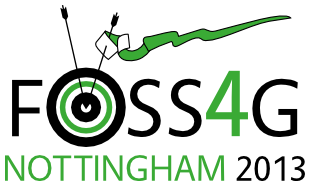Presentation
Mapping For Rights
Georges Thierry Handja (Rainforest UK and Lutra Consulting) with Peter Wells (Lutra Consulting)
12:00 on Thursday 19th September (in Session 4, starting at noon, EMCC: Room 1)
Show in Timetable
Over the last ten years, Rainforest Foundation UK’s participatory mapping programme has demonstrated that forest communities are capable of accurately defining the lands they occupy and use, with the help of geo-technologies, and that they can use this information to gain more secure rights to forest land and resources on which they depend. Our programmes have worked in Cameroon, Central African Republic (CAR), DRC, Gabon and the Republic of Congo. They have trained over 200 mapping facilitators and 40 GIS technicians from NGOs and government in participatory approaches; and trained over 1,000 local community mappers. To date, these people have supported over 300 forest communities to produce fully geo-referenced maps, covering over two million hectares of forest. During those years, communities were trained to use GPS units for data collection, and their maps were produced using proprietary GIS software which were very expensive in terms of initial and ongoing maintenance costs. All the data collected from various sources were stored on local computers and only a limited backup strategy existed. Due to the use of un-verified software packages, data were prone to corruption or loss as a result of computer viruses. In addition, it was not possible to effectively quality assure the data. Since 2009, The Rainforest Foundation with the support of Lutra Consulting have started to adopt open source GIS software. PostGIS is now used to centrally store all background and survey data including legacy data collected up until 2005. The GIS infrastructure was set up in a way which allows a data administrator to more easily follow QA procedures for the surveyed data. A WebGIS platform was developed (based on MapServer) to present the verified data with uniform symbology and allow end-users to easily generate hard-copy maps through the project website. More recently, to facilitate field survey, an Android application was developed based on Quantum GIS (QGIS). The application features a heavily simplified, pictorial user-interface, allowing users with minimal training to operate survey devices. 500 villages will be surveyed using GPS-enabled Android devices and the results uploaded securely into the PostGIS database from the field.
